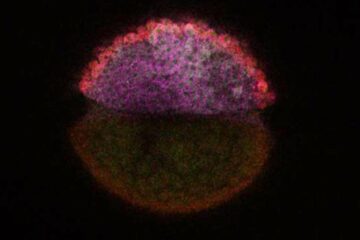Role of protein in immune response may aid HIV research

In the July 28 issue of the Journal of Biological Chemistry, Roman Dziarski, Ph.D., and Dipika Gupta, Ph.D., propose that the proteins might be used to develop medications that could boost the body's impaired day-to-day response to bacteria in HIV/AIDS patients and others with compromised immune responses. The scientists announced discovery of the protein called PGLYRP – peptidoglycan recognition proteins – earlier this year.
Patients, such as those with HIV/AIDS, are susceptible to bacterial infections that are easily averted by people with healthy immune systems but are life-threatening to people with impaired systems.
Drs. Dziarski and Gupta, in their latest report, revealed many parts of the body produce these proteins, which fight disease-causing bacteria. These proteins appear to be the front line in defending the body from infection, mounting a defense long before the body's main immune system responds.
The IU School of Medicine – Northwest scientists report that various organs mount different defensive responses with PGLYRP when exposed to bacteria. The skin produces these proteins only when exposed to virulent or high numbers of bacteria.
In contrast, the liver, whose function is to continuously monitor the blood and fight acute infection, produces PGLYRP constantly. The researchers suggest that the liver's constant protein production may help fulfill the organ's preventative role as a blood filter.
Media Contact
More Information:
http://www.iupui.eduAll latest news from the category: Life Sciences and Chemistry
Articles and reports from the Life Sciences and chemistry area deal with applied and basic research into modern biology, chemistry and human medicine.
Valuable information can be found on a range of life sciences fields including bacteriology, biochemistry, bionics, bioinformatics, biophysics, biotechnology, genetics, geobotany, human biology, marine biology, microbiology, molecular biology, cellular biology, zoology, bioinorganic chemistry, microchemistry and environmental chemistry.
Newest articles

Attosecond core-level spectroscopy reveals real-time molecular dynamics
Chemical reactions are complex mechanisms. Many different dynamical processes are involved, affecting both the electrons and the nucleus of the present atoms. Very often the strongly coupled electron and nuclear…

Columbia researchers “unzip” 2D materials with lasers
The new technique can modify the nanostructure of bulk and 2D crystals without a cleanroom or expensive etching equipment. In a new paper published on May 1 in the journal…

Decoding development: mRNA’s role in embryo formation
A new study at Hebrew University reveals insights into mRNA regulation during embryonic development. The study combines single-cell RNA-Seq and metabolic labeling in zebrafish embryos, distinguishing between newly-transcribed and pre-existing…





















